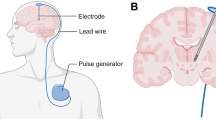Abstract
Magnetic resonance imaging (MRI) is a powerful diagnostic tool that can be optimized to display a wide range of clinical conditions. An MRI system consists of four major components: a main magnet formed by superconducting coils, gradient coils, radiofrequency (RF) coils, and computer systems. Each component has safety considerations. Unless carefully controlled, the MRI machine’s strong static magnetic field could turn a ferromagnetic object into a harmful projectile or cause vertigo and headache. Switching magnetic fields in the gradients evokes loud noises in the scanner, which can be mitigated by ear protection. Gradients also generate varying magnetic fields that can cause peripheral nerve stimulation and muscle twitching. Magnetic fields produced by RF coils deposit energy in the body and can cause tissue heating (with the potential to cause skin burns). In this review, we provide an overview of the components of a typical clinical MRI scanner and its associated safety issues. We also discuss how the relationship between the scanning parameters can be manipulated to improve image quality while ensuring a safe operational environment for the patients and staff. Understanding the strengths and limitations of these parameters can enable users to choose optimal techniques for image acquisition, apply them in clinical practice, and improve the diagnostic accuracy of an MRI examination.






Similar content being viewed by others
References
Grover VP, Tognarelli JM, Crossey MM et al (2015) Magnetic resonance imaging: principles and techniques: lessons for clinicians. J Clin Exp Hepatol 5:246–255
Serai SD, Hu HH, Ahmad R et al (2020) Newly developed methods for reducing motion artifacts in pediatric abdominal MRI: tips and pearls. AJR Am J Roentgenol 214:1042–1053
Serai SD, Jones BV, Podberesky DJ, Coley B (2013) Is it time for a dedicated pediatric MRI ACR accreditation program? J Am Coll Radiol 10:274–278
Serai SD, Rigsby CK, Kan HJ et al (2018) Inclusion of pediatric-specific indications and procedures in the new ACR MRI accreditation program. J Am Coll Radiol 15:1022–1026
International Electrotechnical Commission (2010) Medical electrical equipment — part 2–33: particular requirements for the basic safety and essential performance of magnetic resonance equipment for medical diagnosis. IEC 60601–2-33. U.S. Food and Drug Administration website. https://www.accessdata.fda.gov/scripts/cdrh/cfdocs/cfStandards/detail.cfm?standard__identification_no=37168. Accessed 29 Sep 2020
U.S. Department of Health and Human Services, Food and Drug Administration (2014) Criteria for significant risk investigations of magnetic resonance diagnostic devices — guidance for industry and Food and Drug Administration staff. Online document. https://www.fda.gov/media/71385/download. Accessed 28 Sep 2020
Hartwig V, Giovannetti G, Vanello N et al (2009) Biological effects and safety in magnetic resonance imaging: a review. Int J Environ Res Public Health 6:1778–1798
Franco G, Perduri R, Murolo A (2008) Health effects of occupational exposure to static magnetic fields used in magnetic resonance imaging: a review. Med Lav 99:16–28
Mansfield P, Glover PM, Beaumont J (1998) Sound generation in gradient coil structures for MRI. Magn Reson Med 39:539–550
McJury M, Blug A, Joerger C et al (1994) Short communication: acoustic noise levels during magnetic resonance imaging scanning at 1.5 T. Br J Radiol 67:413–415
McJury MJ (1995) Acoustic noise levels generated during high field MR imaging. Clin Radiol 50:331–334
Quirk ME, Letendre AJ, Ciottone RA, Lingley JF (1989) Anxiety in patients undergoing MR imaging. Radiology 170:463–466
Alibek S, Vogel M, Sun W et al (2014) Acoustic noise reduction in MRI using silent scan: an initial experience. Diagn Interv Radiol 20:360–363
Fuelkell P, Langner S, Friedrich N et al (2018) Software-based noise reduction in cranial magnetic resonance imaging: influence on image quality. PLoS One 13:e0206196
Corcuera-Solano I, Doshi A, Pawha PS et al (2015) Quiet PROPELLER MRI techniques match the quality of conventional PROPELLER brain imaging techniques. AJNR Am J Neuroradiol 36:1124–1127
Zaccagnino E, Devincent C, Leelakanok N et al (2019) Assessment of quiet T2 weighted PROPELLER sequence in pediatric abdominal imaging. Clin Imaging 53:12–16
McRobbie DW, Moore EA, Graves MJ, Prince MR (2007) MRI from picture to proton, 2nd edn. Cambridge University Press, New York
Author information
Authors and Affiliations
Corresponding author
Ethics declarations
Conflicts of interest
Sherwin Chan has a research grant and honorarium from Jazz Pharmaceuticals.
Additional information
Publisher’s note
Springer Nature remains neutral with regard to jurisdictional claims in published maps and institutional affiliations.
Rights and permissions
About this article
Cite this article
Serai, S.D., Ho, ML., Artunduaga, M. et al. Components of a magnetic resonance imaging system and their relationship to safety and image quality. Pediatr Radiol 51, 716–723 (2021). https://doi.org/10.1007/s00247-020-04894-9
Received:
Revised:
Accepted:
Published:
Issue Date:
DOI: https://doi.org/10.1007/s00247-020-04894-9




